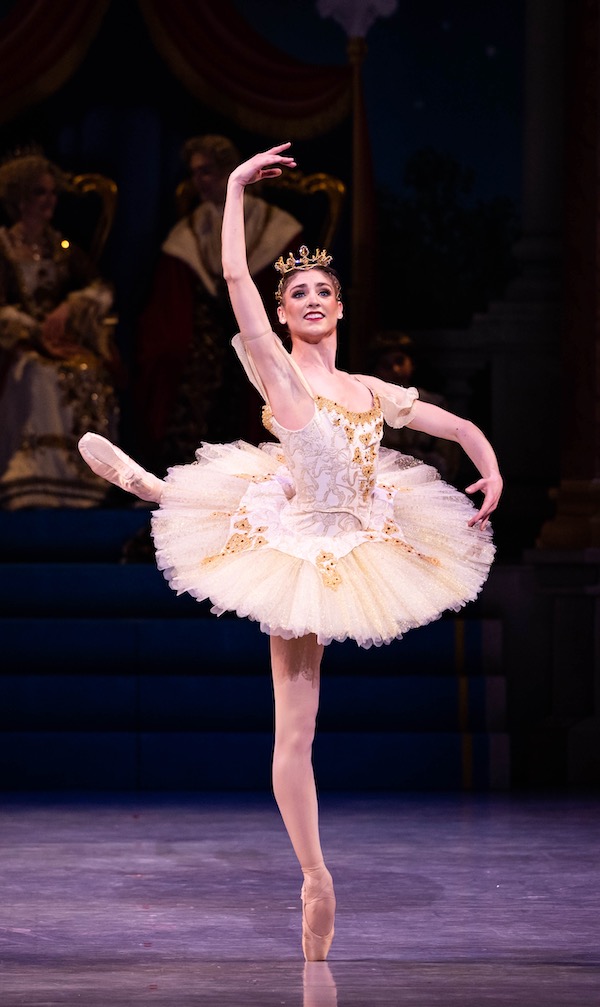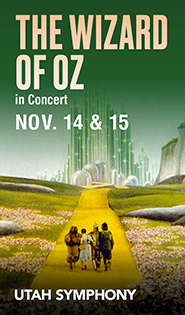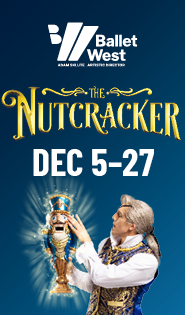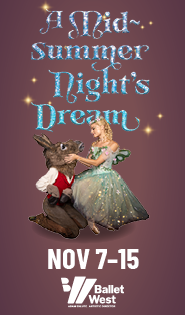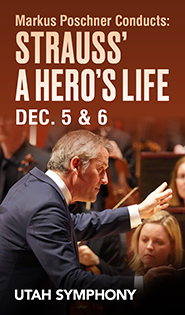Ballet West’s “Sleeping Beauty” awakens classic to brilliant life
In Ballet West’s production of Sleeping Beauty, which opened Friday night at the Lawson Capitol Theatre, the company finds modern novelty in one of the most famous and renowned repertoire ballets.
While the show revives the 2011 joint choreography by Pamela Robinson-Harris (Prologue and Act II) and Mark Goldweber (Acts I and III), the current show features brand-new sets from Alain Vaes in all but Act II. These are subtle and elegant but pale a bit in comparison to the previous forest maze of shifting parts in Act II, but the unique, segmented choreography offers a take on Sleeping Beauty full of pomp and romanticism.
Even with the use of two choreographers, the show is united with subtle but noticeable differences. Goldweber’s choreography leans toward the more fluid and traditional. Robinson-Harris contrasts this with more jagged movements and a more playful touch. In the Prologue, the dance of the four fairies—Kindness (Lillian Casscells), Joy (Chelsea Keefer), Beauty (Amy Potter) and, particularly Temperament (Kristina Weimar)—exemplifies the choreographer’s style as the dancers bounce against the music’s fluttering flute rhythms in short, sharp movements.
As Ballet West’s marketing would suggest, the ballet’s true star is Nicole Fannéy as Carabosse, the evil Fairy of Jealousy who curses Aurora (Emily Adams) to her 100-year sleep. Carabosse and her posse of minions (who look like Jim Carrey’s Grinch with dreads) counter the generally reserved tone of the ballet with flourishes of sass, gymnastics and blinding practical explosions. Carabosse’s spar-offs between the Lilac Fairy (elegantly performed by Victoria Vassos) exaggerate their differences in personality and performance style to the point that they’re practically voguing—one is sharp, arrogant and interruptive, the other patient, careful and extensive.
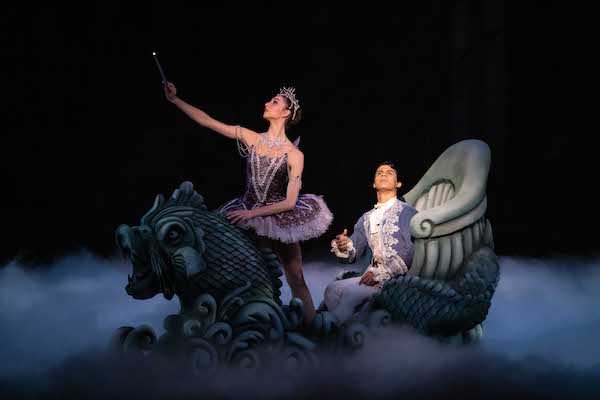
Adams’ Aurora exists outside of these exaggerated portraits. When she finally enters midway through Act I at her doomed 16th birthday party, she descends the palace stairs with a mix of youthfulness and poise. As she fields the four princes sent to ask her hand in marriage, she leaps between them with carefree exploration. When she eventually collapses under Carabosse’s spell, Adams alternates between a sluggish, feverish crawl and over-the-top rapidity in a last-ditch effort to remain conscious. Here we see resiliency as opposed to “damsel in distress” defeat. She shows a confidence similar to that she exhibited as she entertained and thwarted her gentlemen callers; tragic, futile attempts to prove strength in the face of fate.
Hadriel Diniz’s reveal as Aurora’s savior, Prince Desire, and subsequent pursuit of her ghostly form in Act II stands as one of the ballet’s most astounding moments. Mediated by the grace of the Lilac Fairy, Diniz leaps after Adams only to slip and find his steps stuttering and she slides away from him.
Throughout, they dance between a synchronized group of water nymphs who move, like nature, as if blind to the romantic drama playing out between the two leads. As Diniz ascends the steps to the sleeping princess’ tomb, he does so in slow, cautious steps. This reservation marks his performance until the concluding wedding scene, where his timidity opens up into wide-limbed flourishes, most notable in his solo section of the grand pas des deux as he bounds around the stage in thumping celebration.
Against the expressiveness of Robinson-Harris’ sections, in Goldweber’s Act I and III, we see composition, unity and fluidity of motion. Whether intentional or just a byproduct of their individual approaches, the alternating choreographed acts block the narrative into differentiated chunks. The bulk of the ballet centers on dance numbers where the core emotional themes expand into poetry—the extended metaphors of the partnering, unpartnering and re-partnering between Aurora and her suitors in Act I, the touchless dance of desire between Prince Desire and Aurora in Act II.
Bolstered by delicate, sparkle-laden costuming—including a clever shift from regal 1600s fashion in the ballet’s first half to sportier 1700s coats—Ballet West’s Sleeping Beauty offers a treat for the eyes (and Tchaikovsky’s music a feast for the ears). The ballet might be a little long and fluffy, but the company’s knack for grandiosity and the individual tones imbued by the split choreography pull all the emotion and metaphoric drama out of the classic narrative.
Ballet West’s Sleeping Beauty continues at the Capitol Theatre through February 18. balletwest.org
